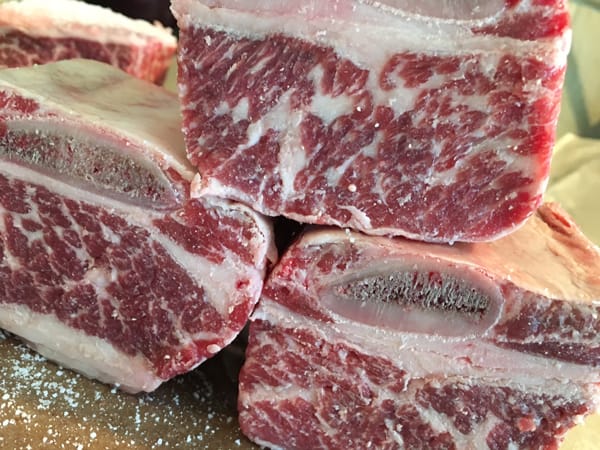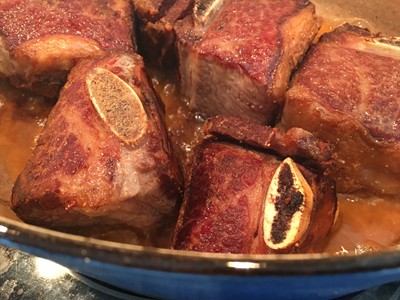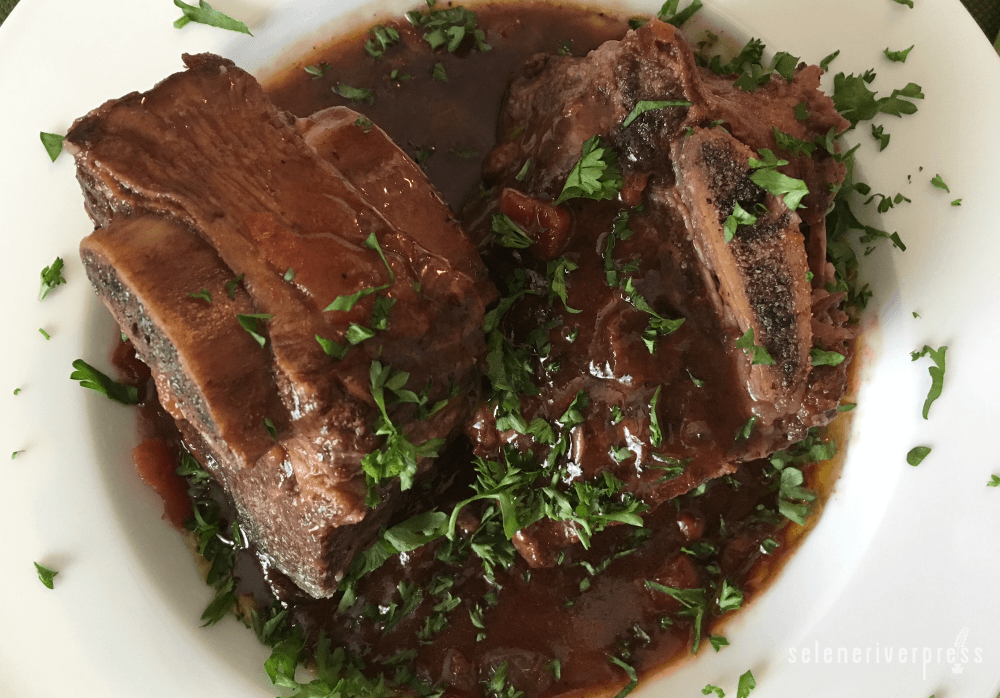I noticed bulbs popping up in my garden today. Now, if I still lived back in the Pacific Northwest, this wouldn’t be a problem. In fact, it would be expected. But in Colorado, where the chance that winter will be over by mid-February is slim to none, it’s still far too early for my delicate spring flowers to sprout their bright green blades. We had a huge snowfall a couple weeks back; it was the first time school had been cancelled in many years. This week, we have sunshine and temps in the sixties. And the snow is all but gone, outside of the lone strip caught in the north shade of my fence.
Quite a tease, to be honest—my body and brain crave spring, but my heart knows not to believe such deceptive witchcraft-ery brought to us by the weather gods. While my stomach and senses desperately yearn for lighter fare, I still need warming, hearty foods to feel sustained right now. So I guess my meals will still focus on soups, stews, and tender, slow-cooked meats…for a few more weeks at least.
 My favorite cut of meat to slow cook has to be beef short ribs. Succulent and silken, the way the fat marbles throughout these gems makes them practically indestructible. They seem immune to drying out and produce results that are consistently delicious. You can find them bone-in or boneless. I’ve actually switched to boneless short ribs for all my braises and stews when the recipe calls for cubed chuck roast or another low and slow tougher cut of meat. They’re a little pricier than other, less-desirable cuts, but the results more than make up for any price difference.
My favorite cut of meat to slow cook has to be beef short ribs. Succulent and silken, the way the fat marbles throughout these gems makes them practically indestructible. They seem immune to drying out and produce results that are consistently delicious. You can find them bone-in or boneless. I’ve actually switched to boneless short ribs for all my braises and stews when the recipe calls for cubed chuck roast or another low and slow tougher cut of meat. They’re a little pricier than other, less-desirable cuts, but the results more than make up for any price difference.
If possible, try to find grass-fed beef, as the nutrients (primarily vitamins A and E, omega-3 fatty acids, and conjugated linoleic acid, as well as minerals like zinc and iron) are far greater than their grain-fed counterparts. One of the main complaints I hear about grass-fed beef is that it’s too lean, thus a little tougher than grain-fed. But I’m happy to say that you shouldn’t find that problem with short-ribs. In fact, since the majority of these fatty acids reside in the fat itself, grass-fed fat is where it’s at!
One secret I’ve found to make the most tender, flavorful stewed meat is to cook it overnight in a really low oven. Outside of using a countertop slow cooker, this method has proven to be my go-to for all things braised and stewed. And since dishes like this are much better if made in advance, it works perfectly to pull it from the oven to cool before heading to work for the day, and then heating it up that evening.
Braised Short Ribs in Rosemary-Red Wine Gravy
Prep time: 30 minutes
Cook time: 5-12 hours (I recommend lower and slower)
Serves 4
Ingredients
 4–8 large bone-in beef short ribs (approximately 4 lbs. total)
4–8 large bone-in beef short ribs (approximately 4 lbs. total)
Salt and pepper
Beef tallow, lard, bacon fat, or other high-heat stable fat
2 celery stalks, about 4 inches long apiece
4 sprigs rosemary
4 sprigs thyme
4 parsley stems
1 bay leaf
1 onion, diced
2 cloves garlic, minced
1 tablespoon tomato paste
2 cups canned diced tomatoes
2 cups beef broth
2 cups red wine
2 tbsp tapioca starch
2 tbsp cold water
¼ cup chopped parsley
Instructions
- Heat a large Dutch oven or heavy-bottom pan over medium until very hot. Season beef short ribs with salt and pepper. Melt a tablespoon of fat in the pot, then sear ribs on all sides, in batches if necessary, until deeply browned. Transfer to a plate and set aside. Continue with any remaining ribs, adding more fat as necessary.
- Make a bouquet with celery stalks and herbs. Tie tightly with twine. Pour off all but 2 tablespoons of fat from pot. Add onions and garlic and sauté until golden, about 5 minutes. Season with salt and pepper. Add tomato paste and stir through. Add herb bunch, along with tomatoes, beef broth, and wine.
- Preheat the oven to 300°F (for shorter cooking) or 200°F (for longer cooking). Return short ribs to pot and bring liquid to a boil. Cover and place ribs in oven. Bake until very tender (about 4–5 hours at 300°F or 10–12 hours at 200°F). Add extra liquid if mixture ever seems dry.
- Remove ribs from liquid with a slotted spoon and set aside. Discard herb bouquet. Add additional liquid to gravy, if necessary, if it seems dry. Combine tapioca starch with water in a small bowl. Bring liquid to a simmer on stovetop. Stir in tapioca mixture, and cook until gravy thickens. Taste and adjust seasonings with salt and pepper. Return ribs to gravy and garnish with parsley.
AUTHOR’S NOTE
To choose your organically grown and fresh ingredients wisely, use the following criteria:
- chemical- and hormone-free meat
- wild-caught fish
- pasture-raised, organic eggs
- whole, unrefined grains
- virgin, unrefined, first-press organic oils
- whole-food, unrefined sweeteners
- pure, clean, spring water
- sea salt
- raw and/or cultured milk and cream products
Photos by Briana Nervig



OK, now I’m drooling.
What a great recipe for the less tender cuts of beef, like
short ribs that are so often overlooked. These are worth the wait.